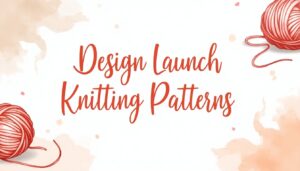When it comes to jewelry design, the software choice can be a game changer. Many designers mistakenly think Blender is sufficient due to its free availability and impressive capabilities. However, Blender is primarily a general-purpose 3D modeling tool that lacks the specialized features vital for detailed jewelry work. The learning curve of Blender can also hinder creativity, as time spent mastering the software could be better used on actual design. Furthermore, its limitations in precision and file management often lead to inefficiencies and inaccuracies—major setbacks for any serious designer. Opting for dedicated jewelry CAD tools can greatly elevate your designs and workflow efficiency.
1. General Software vs. Jewelry Design Tools
 Credits: cadjewelleryskills.com
Credits: cadjewelleryskills.com
Blender is a general-purpose 3D modeling software that excels in animation and game design. While it offers powerful modeling and sculpting features, it lacks the specialized tools needed for jewelry design. Jewelry design requires precision and specific functionalities, such as parametric modeling, gem settings, and detailed surface treatments. Dedicated jewelry CAD software, like Rhino, Matrix, and ZBrush, is specifically tailored for this purpose. These tools provide features like automatic gemstone insertion and advanced duplication patterns, streamlining the design process and reducing time spent on adjustments. In contrast, Blender can create beautiful models, but users often find themselves needing to create components from scratch, which is a time-consuming process.
| Feature | Blender | Dedicated Jewelry CAD Software (e.g., Rhino, Matrix, ZBrush) |
|---|---|---|
| Modeling Capabilities | General-purpose modeling | Specialized jewelry modeling tools |
| Gem Setting Tools | Limited tools for gemstone settings | Automatic gemstone insertion and specific settings tools |
| Parametric Modeling | Not available | Fully supports parametric modeling |
| Duplication Patterns | Manual duplication required | Advanced duplication patterns available |
| Surface Treatment Options | Basic options | Detailed surface treatments tailored for jewelry |
| Workflow Efficiency | Can be tedious and time-consuming | Streamlined processes to minimize adjustments and corrections |
2. Learning Curve and Usability
Blender is known for its steep learning curve. While there are countless tutorials available, mastering Blender can take significant time and effort. For jewelry designers focused on creating intricate pieces, this can detract from their creative process. Many users report that while Blender is powerful, the complexity of its interface can lead to frustration, especially for those new to 3D modeling. Tasks that should be straightforward can become cumbersome, leading to inefficiencies in the design workflow. In contrast, alternative software like 3Design and Firestorm is built with the user experience in mind, offering intuitive interfaces that cater specifically to jewelry designers. This allows designers to concentrate on their creativity rather than getting bogged down in technicalities.
3. Precision in Jewelry Modeling
 Credits: formlabs.com
Credits: formlabs.com
Jewelry design demands high precision, particularly when it comes to dimensions and details. Blender, while capable of producing high-quality models, may fall short in ensuring the level of precision required for professional jewelry pieces. Software like Rhino and Matrix utilizes parametric modeling, allowing designers to create models that can be easily modified without starting from scratch. This is invaluable when dealing with client requests for changes in dimensions or styles. In contrast, Blender’s mesh-based approach may not always provide the fine-tuned control over dimensions that jewelry design often requires. This can lead to inaccuracies that are problematic when creating pieces intended for casting or production. For instance, a slight miscalculation in the thickness of a ring could result in structural weaknesses during the casting process, leading to potential failures. Therefore, precision in jewelry modeling is essential, and using software specifically designed for the task is crucial to achieving professional results.
4. File Management Challenges
When designing for 3D printing and casting, file management is critical. Blender’s file handling can be cumbersome, especially when working with high-resolution models. Users have reported difficulties with file sizes when uploading to 3D printing services, which often have strict limits. For instance, a user mentioned needing to reduce their model size significantly to meet service requirements, which led to a loss of detail. Ensuring models are ‘watertight’ for printing is also a challenge. Blender’s merging tools can be slow and ineffective, sometimes requiring additional software like Meshmixer to finalize models for printing.
5. Cost-Effectiveness of Specialized Software
While Blender is free to use, the hidden costs associated with it can add up quickly for serious jewelry designers. The time spent learning the software and troubleshooting its complexities can outweigh the initial savings. For professionals, time is money, and investing in specialized jewelry design software can lead to greater efficiency and productivity.
For example, dedicated tools like Rhino and Matrix, although they come with a price, are designed specifically for jewelry design. They offer features that streamline the design process, reduce errors, and help create higher-quality pieces in less time. This can translate to more designs completed and ultimately, more sales.
Moreover, for those on a tighter budget, software like TinkerCAD and Fusion 360 provides affordable options that still cater to jewelry design needs. These tools tend to have more intuitive interfaces and specific features that make designing easier, allowing designers to focus on their craft rather than getting stuck in technical issues.
In contrast, relying on Blender for serious work may lead to longer design cycles and increased frustration, diminishing the overall value of using the software.
6. Blender’s Incompatibility with Industry Standards
Blender often struggles to meet the specific requirements set by industry standards in jewelry design. For instance, many professional jewelry designers follow guidelines established by organizations like the Gemological Institute of America (GIA) and others that dictate certain dimensions and tolerances for pieces. Blender, being a general-purpose software, does not inherently support these standards, making it challenging for designers to create pieces that comply with industry norms. In contrast, dedicated jewelry design software, such as Rhino or Matrix, includes built-in tools that align with these standards, ensuring that designs meet the necessary specifications right from the start. Furthermore, file formats generated by Blender may not always be compatible with the systems used in professional jewelry manufacturing. This can lead to additional steps in the workflow, such as converting files or adjusting settings, which can be time-consuming and prone to error. For example, a designer might find that a file created in Blender needs extensive modifications before it can be used for 3D printing, while software specifically designed for jewelry would handle this seamlessly.
7. The Importance of Specific Features in Jewelry Design
Jewelry design is not just about creating visually appealing shapes; it involves specific features that cater to the unique demands of the craft. For instance, the ability to easily insert gemstones into a design is vital. Specialized software like Matrix offers automatic gemstone placement, which saves time and ensures that settings are accurately modeled. In contrast, Blender lacks such tools, often requiring users to manually create settings, which can lead to inconsistencies and increased design time.
Moreover, intricate designs often require complex pattern creation, such as filigree or lattice work. Dedicated jewelry design software provides features that allow designers to quickly replicate and modify patterns, something that Blender does not support effectively. This can result in tedious and repetitive tasks for designers, ultimately stifling creativity and innovation. In essence, the importance of specific features in jewelry design cannot be overstated; they are essential for efficiency, precision, and achieving the desired artistic vision.
- Advanced CAD capabilities for intricate designs
- Customizable templates tailored to jewelry making
- Support for multiple file formats used in the jewelry industry
- Tools for precise measurement and scaling
- Render options for realistic previews
- Integration with 3D printing technology
- User-friendly interface for quick design iterations
Frequently Asked Questions
1. Why is BLENDER not suitable for detailed jewelry design?
BLENDER is mainly used for 3D animations and models, which makes it less effective for intricate details required in jewelry design.
2. Are there better software options for jewelry design than BLENDER?
Yes, software like RhinoGold, Matrix, and Tinkercad are specifically built for jewelry design, providing tools that BLENDER lacks.
3. How does using BLENDER affect the quality of jewelry designs?
Using BLENDER can lead to less precise and higher error rates in designs, making it harder to produce high-quality jewelry.
4. Can I still create unique designs with BLENDER for jewelry?
While you can create unique designs, the lack of specific jewelry design tools may limit your creativity and the functionality required for production.
5. Is it hard to learn jewelry design software compared to BLENDER?
Many dedicated jewelry design programs may have a learning curve, but they are often more intuitive for jewelry-specific tasks than BLENDER.
TL;DR While Blender is a popular 3D modeling tool, it falls short for serious jewelry design due to its general-purpose nature, steep learning curve, and lack of specialized features. For precise, intricate, and professional jewelry work, investing in dedicated jewelry design software like Rhino, Matrix, or ZBrush is essential. These specialized tools enhance productivity and ensure the necessary precision in your designs.





